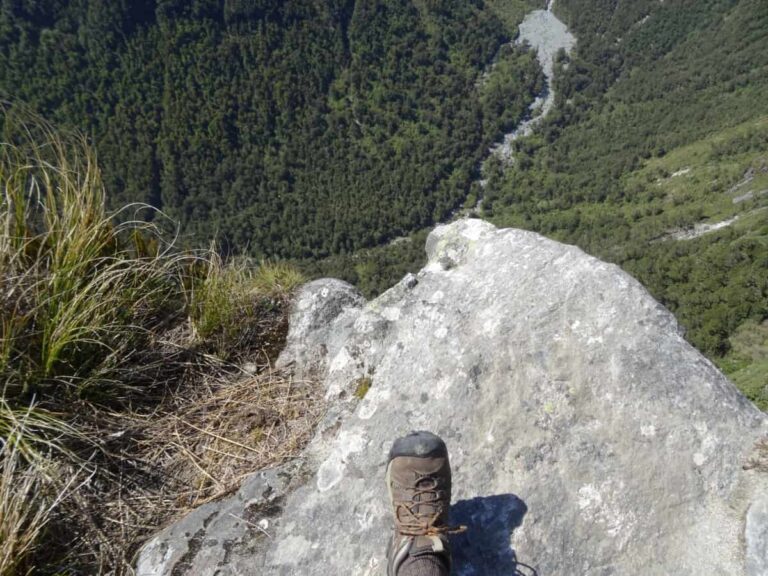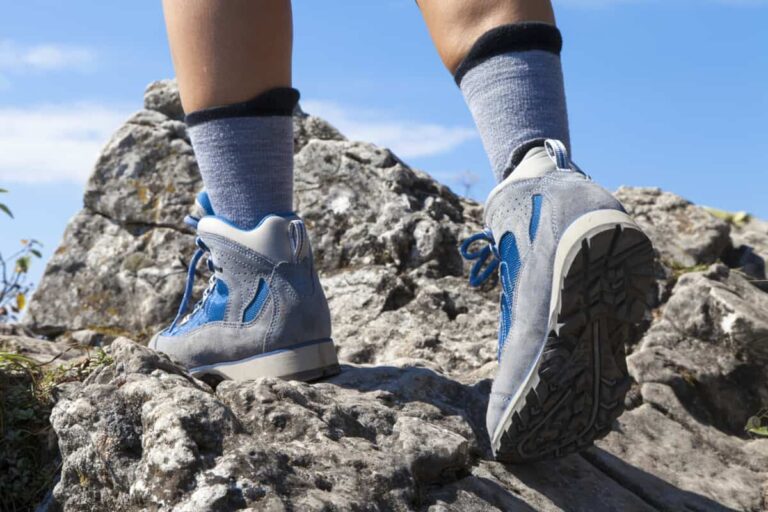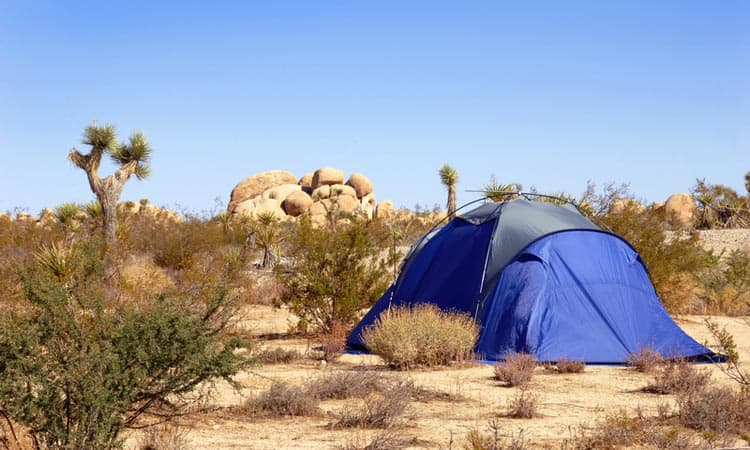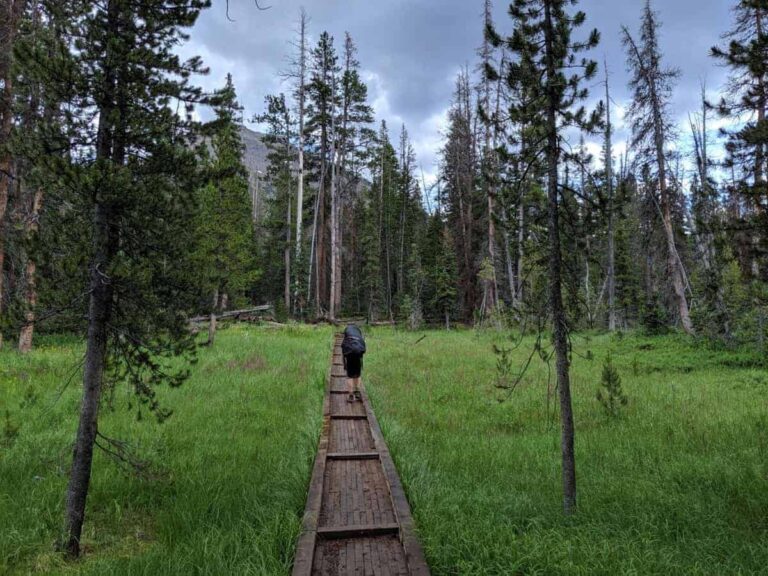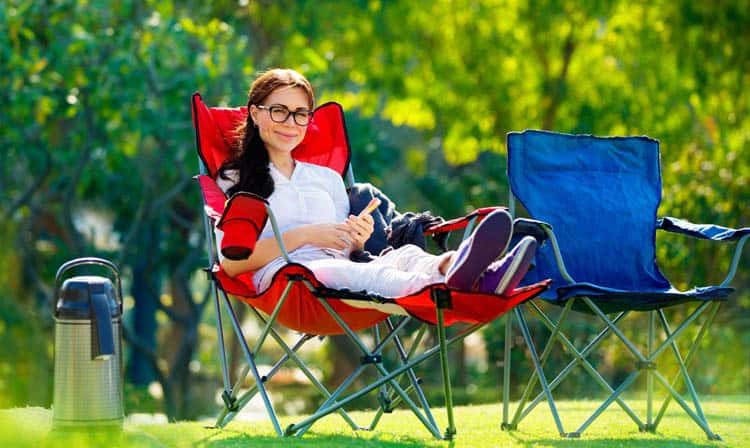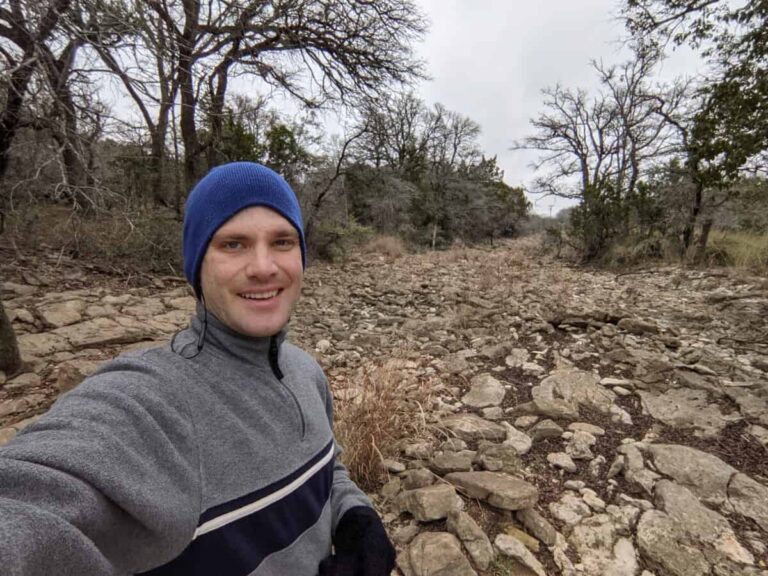What Should You Not Do While Hiking? Etiquette, Safety, Health
What are the best ways to be safe and polite on the trail?
There are many reasons to love hiking. The beauty and peace of the natural space, the real-world challenge of the path, and the ability to get exercise without being bored are just a few. It can be easy to fall into thinking that the hiking trail is a safe space. Most of the time, it feels safe.
That said, accidents and other issues can occur that – at a bare minimum – might spoil the experience. Staying safe and healthy on the trail is the number one priority. In addition, making sure that you’re being respectful while you’re hiking is the key to allowing everyone to get the most out of the space.
Read on, and you’ll get plenty of key tips on trail etiquette, safety, and health. Keep these tips in mind and you’re sure to have the best possible time during every outing.
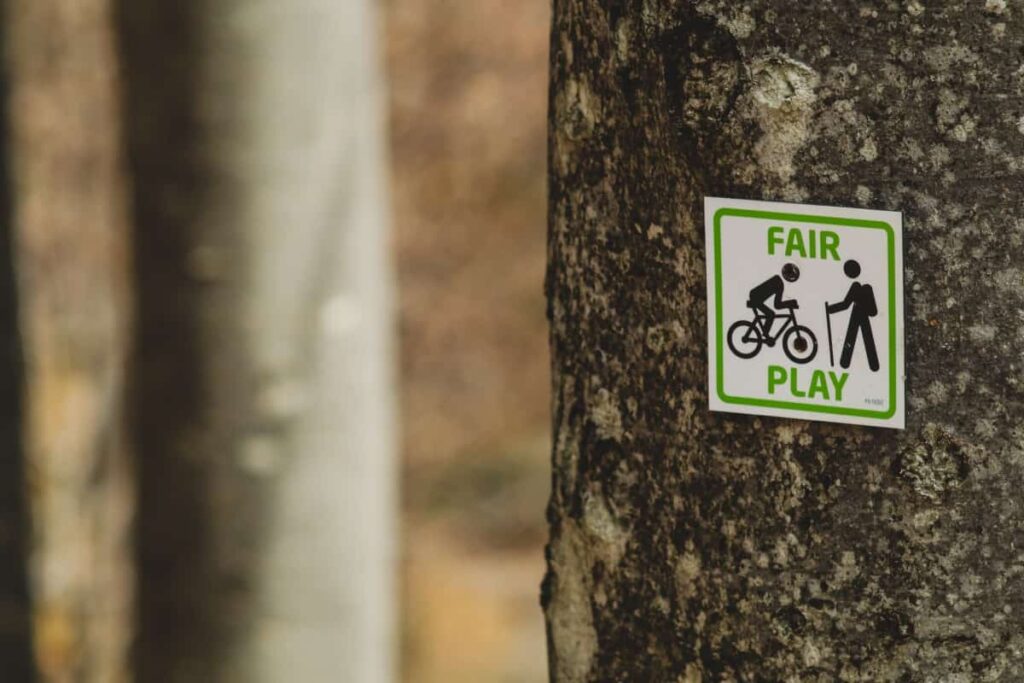
Trail Etiquette
When you’re out on a hike, it’s important to keep etiquette in mind. That can mean etiquette towards the environment or to other hikers who might be on the trail. Remember, the trail is for everyone to enjoy. Keep the following trail etiquette tips in mind for all of your future hiking trips. It will not only make the experience better for you, but for any others who are on the trail or who might visit it in the future.
Forget Your Trash Bag
If you’re bringing anything with you that might create trash, such as snacks, drinks, or bathroom supplies, it’s extremely important to at least bring a small trash bag with you. Leaving trash along the trail is unsightly and bad for the environment.
Just think about why you’re out on the trail, to begin with. It’s likely that you enjoy the sights and sounds of nature all around you. If you head out onto the trail and find that there are food wrappers and cans strewn throughout the wilderness, it’s probably going to take some of that enjoyment away and even create stress for you. An act as simple as bringing a small bag to store your trash in can make a huge difference.
Play Music
As long as you’re aware of your environment, there’s absolutely nothing wrong with listening to an audiobook, a podcast, or your favorite music while you’re out on a hike. However, there’s a big difference between listening to your chosen media through earphones and playing it on a speaker for every other hiker to hear.
Not everyone wants to listen to media (music, podcasts, audiobooks) while they are hiking. Plenty of hikers prefer peace and quiet. Even if someone does want to listen to something, they, most likely, want to listen to their own favorites. There are places where playing your own music through a speaker is okay, but the hiking trail simply isn’t one of them. If you enjoy listening while you hike, just bring along some earphones and everyone is sure to have a much better time.
Ignore Right Of Way
Hiking on a trail is pretty similar to driving down the road. Depending on where you’re going and how you’re getting there, there may be different rules for you in terms of the right of way. After all, there has to be a way to navigate those who are walking alone, in groups, or on bikes or horses.
To put it in the most simple context – equestrians typically have priority when it comes to the right of way. Following that are cyclists, hikers, and then hikers who are traveling with dogs. If you want more explanation on the rules or why they vary between different kinds of travelers, the Washington Trails Association has a convenient page on their website that explains the rules and limitations.
One easy trail etiquette tip to miss is related to momentum. Hiking can be really challenging, and if you are scrambling up a hill and you’re huffing and puffing, the last thing you want to do is interrupt your climb and get off the trail and wait for others to pass. Those going uphill have right of way over those going downhill.
In short, trail etiquette is easily worked out if you are aware of those around you.
Feed Wild Animals
Animals are adorable and can become friendly if they get used to people. It can really be tempting to try to make friends with a squirrel or deer while you’re out on the hiking trail. Even though many of us might want to release our inner Disney princesses, it’s much better for the animals if you avoid feeding them or getting them too used to the presence of humans at all.
While you might be friendly to animals, not everyone who goes out on the trail is guaranteed to feel the same way. Some will hurt animals for the fun of it. Additionally, when you bring prey animals closer to you, such as squirrels, birds, deer, or rabbits, predators may not be far behind. Overall, it’s simply safer for both you and the animals if you stick to enjoying their presence from a distance.
Lastly, when you feed a wild animal, the animal will remember that those weird creatures that wear clothes and walk on two legs are sources of food. Part of being a wild animal is constant work to survive. If an animal becomes dependent on a human in any way, then it loses some of its wildness and therefore its ability to survive.
Shout Or Speak Loudly
Hiking trails are often a place where people go to get some peace and quiet and time to enjoy nature. While you’re out on the trail, it’s best to respect others and keep your voice down. That doesn’t mean you can’t talk if you’re hiking with some friends, just make sure you’re not shouting.
That said, there are times when you may need to shout or be loud. If you’ve come across a predator or dangerous person on the trail, it’s important to get loud. On one hand, shouting may scare off the offender. It can also help to alert other hikers in your area that something dangerous is going on. That way, you can get help if you need it, or at least help to ensure the safety of other hikers as well as your own.
So, in short, shout only when you need to.
Block The Trail
There’s nothing wrong with wanting to take a break – or with hiking with some friends. That said, it can be easy to block the trail if you’re hiking with multiple people. If you are someone who prefers group hikes, just try to be aware of your surroundings and move out of the way of other hikers as needed.
If you’re stopping to take a break, try to move off the trail. That way, other hikers will be able to move through freely while you recharge, have a snack, and get ready to start moving again. You don’t have to go far from the trail, just make sure you are off the trail itself. Once you’re ready to get hiking again, you can return to the trail and enjoy the rest of your hike.
Unleash Your Pet
In most circumstances, it’s important to keep your pet on a leash while you’re on a hiking trail. Not only does this protect others, but it protects your pet as well.
It may be entirely possible that you have a very well-behaved pet that doesn’t stray far from you, even off-leash. However, there may be wild animals in the area that will happily see your pet as a tasty snack. If you have them on a leash, it will be easier to pull your pet to safety if a wild animal targets them.
Additionally, other pets on the trail may not be as friendly and well-behaved as your own. Your unleashed pet may cause stress and anxiety for leashed pets that are more anxious or feel the need to protect their owners. Keeping your own pet on a leash can help to avoid confrontation and injuries to your pet.
Lastly, unleashed pets, such as cats, are natural-born hunters–and since domesticated cats have plenty of food, they might spend their time hunting for sport and leave their prey to waste.
Take Souvenirs
Although it may be tempting to pocket a cool rock or other interesting treasure you find while you’re hiking, it’s best not to. To begin with, neither the trail nor the items on it belong to you. Public hiking trails may often be owned by the city or state they are within. Ultimately, that means the trail belongs to everyone, so everyone should be able to enjoy it equally.
You may believe that it isn’t a big deal if you remove one small object from the area, but consider what might happen if everyone on the trail shared that kind of thinking. Instead, feel free to take pictures and enjoy all the wonderful aspects of nature from a distance. That way, we can all continue to enjoy the full beauty of nature.
Hike Off Trail
This one is hard–there are a lot of reasons why it’s very tempting to hike off-trail. Perhaps you can see an easy shortcut, or perhaps the trail can get muddy and messy and you want to keep your feet dry.
The problem is that our environment is very sensitive. As you hike around muddy parts of the trail, the grass and roots, and soil is compacted and the trail grows a little wider.

There are two purposes of the trail:
- Make it easy/possible for hikers to get to a destination
- Protect the land from walking cross-country
If possible, stick to the trail.
One thing that helps me respect the trail is to remember who built it. I hiked into some of the most hardworking people I’d ever met working on the trail in the high Uinta mountains. The amount of work it takes to build and maintain trails is staggering.
I wrote about how trail makers make trails in my article here.
Relieve Yourself On Or Near The Trail
When you gotta go, you gotta go. There’s no shame in that. Just make sure that you practice good etiquette when it happens on the hiking trail. Otherwise, the trail may end up with toilet paper and other unpleasant items strewn about, and that’s just not fun for anyone out there.
So if you find yourself in an urgent situation, make sure that you move a decent distance away from the trail. Be careful to make sure that you are able to easily return to the trail when you’re finished. It’s often a good idea to bring along a tool of some kind to dig what’s known as a cat hole (think about when cats use a litterbox).
When you’re done, cover the hole back up with plenty of dirt, including any biodegradable products you might have used. If you have products that are less eco-friendly, go ahead and pack them into a ziplock bag or garbage bag for safekeeping until you find a trash can to dispose of them in.
For more details on how to poop in the wilderness with as little impact as possible, check out Leave No Trace’s website here.
Leave Graffiti
A large number of people who go out hiking are doing so not just to get some exercise, but to spend some time outside of the sights and sounds of more heavily populated areas. While cities can be exciting, interesting places, they can also be quite stressful for some people. Because of this, they opt to head out into the peace of nature for a little while.
If you’re someone who likes to leave the city behind, it’s frustrating if you started coming across the same sights that you’d find in the city, such as graffiti. Nature is a sacred space. Even the most creative graffiti doesn’t belong on the hiking trail. Please, allow everyone to enjoy the natural sights of the wilderness without the addition of carvings, paints, or markers on the rocks and trees.
Furthermore, many times trail makers rely on blazes (cut out sections of bark), or sometimes spray paint on trees as a way to mark a trail (temporarily or otherwise). Graffiti could potentially mislead someone in the wrong direction.
Safety
A hiking trip that isn’t safe is a trip that isn’t worth taking. There are too many accidents that can happen on the trail to add a higher risk through your own actions. To keep yourself as safe as possible during your trip, keep the following tips in mind.
Go Alone
No matter what trail you’re hiking on, it’s always more dangerous to go alone than it is to bring along a friend or two. That said, the danger can be mitigated if you’re on a more heavily populated trail. It can be tempting to head out onto a nearly empty trail alone, but that can mean there are far fewer people to turn to for help if something happens.
Hikers can be at risk of injuries, illness, and attacks from either wild animals or other people. Something as simple as a sprained ankle can become a big problem if you’re stuck alone in the middle of a trail. If you should have an accident or run into someone dangerous, there’s going to be a lot more at risk if there isn’t at least one other person around to help. If you do decide to go alone, make sure you’re well prepared for any unpleasant situations that might pop up.
I talk about camping alone in my article, here. If you’re nervous about being by yourself, there are lots of things to help make that experience less scary. Encroach On Predators
If you’re someone who hikes often, it’s entirely possible that you might end up coming across a predator at some point in time. Ideally, it’s a predator that you see from far away and you have plenty of time to move away before it has noticed you. However, in some cases, an animal might end up a lot closer than we’d like.
No matter what the circumstances, it’s never a good idea to get too close to a predator. If you happen to see a bear, cougar, wolf, or even a coyote, make sure that you keep your distance. These animals can and will become dangerous if they feel threatened or see you as a convenient dinner option. Prior to heading out on the trail, it’s best to learn what techniques to use for different kinds of predators so that you can scare them off if they get too close. Remember, if you seem like you’re going to be difficult prey, predators will often decide to leave and find something easier to catch.
Leave The Trail
Hundreds of people go missing in the wilds of America on a yearly basis. Often, they aren’t seen again. There can be a wide variety of causes for why these people end up missing, whether it’s due to an accident, an intentional disappearance, or simply getting lost.
It’s all too easy to get lost in the woods once you leave the trail, so it’s highly recommended that you stay as close to the path as possible. If you decide to step off the trail for any reason, make sure that you keep the trail in sight so that you can return to it afterward. Unless you are extremely experienced in navigating the wilderness, it’s not worth the risk of accidentally becoming lost and/or injured.
Hiking isn’t without risks. I talk about some of the reasons why hiking can be dangerous in my article, here.
Leave Your Phone At Home
It makes sense to want to get away from screens while you’re out hiking, but it’s still a good idea to bring your phone along. You don’t have to be using it or even have it out. Just bring it along in your pack for the sake of safety. If you should accidentally become injured or lost, it will be worthwhile to have it with you.
Not only can you use it to call for help if you need to, but many phones these days can offer tools like GPS and even compass apps that can help you make your way in the right direction if you happen to get lost. Just make sure it has a full battery when you pack it, and you may even opt to bring an extra battery or emergency charger just in case. It’s always better to have safety tools you don’t need to use than it is to really need help and not be able to get it.
Just having your phone isn’t enough, there are some tools you need to install to prepare your phone which I talk about in the next section.
Forget To Pack Navigational Tools
Navigational tools can be an absolute lifesaver if you get lost or need assistance somewhere along the trail. These kinds of tools might include a GPS, smartphone, map, compass, or even a smartwatch. Wherever you are, these tools can make it easier to discern what direction you need to go in.
Additionally, they can give helpers a way to determine where you are. Different tools can allow other people to see your location, or simply give you the coordinates you need to share with others so that they can locate you. Even if you don’t end up in trouble yourself, you never know when you might need to report something along the trail to the proper authorities.
Wherever you are, it’s wise to make sure you have the right navigational tools, as not all tools will work in the same areas. For example, smartphones may not have a signal in more solitary hiking trails. Because of this, tools like a hiking GPS can be more suitable. If you’re curious about whether or not you need a hiking GPS, learn more about the benefits these devices offer in our article here.
Digital Technology relies on electricity, so no matter what, you need to be prepared on long hikes in the wilderness with a map (and the knowledge of how to use one).

Health
The most important aspect of hiking on a trail is ensuring your health and the health of anyone who might be with you. A number of different things can happen while you’re out hiking, but just a few simple steps can help to protect you against issues like dehydration, venomous insect bites, and more.
Prepare yourself with the following tips to keep yourself healthy and happy on the trail.
Forget Water
Hydration is important no matter where you are. That said, it’s even more important when you’re exerting yourself or are spending extra time in the heat. Without water, you have a higher risk of experiencing heat exhaustion, heatstroke, or of just experiencing a lack of energy. Water is essential for keeping your body running effectively.
When you’re heading onto the trail, try to at least bring one bottle of water. If you’re going to be out longer, then you can choose to either bring more or bring along a setup to filter freshwater from the resources along the trail. If you choose the latter, make sure that you know where each of those resources is and how much water you’ll need to have between each stop.
How much water do you need? I talk about this in my article, here.
Go Without Sun Protection
Even under the cover of trees, the UV rays of the sun can still reach your skin. Many hikers enjoy the warmth of cozy summer days, but those UV rays can cause some serious problems if you don’t use sunscreen beforehand.
Sunburns are annoying when you’re in AC, but they can be absolute misery when you’re out in the wilderness, especially with a heavy pack or in similar situations.
It’s worth the extra effort to protect yourself from those circumstances. All you have to do is put on sunscreen before your hike and touch up later on if you’re in the sun for long periods of time. You can also choose to wear lightweight, long sleeve sun shirts if you’re especially susceptible to burning, and hats to help with keeping the sun off your face.
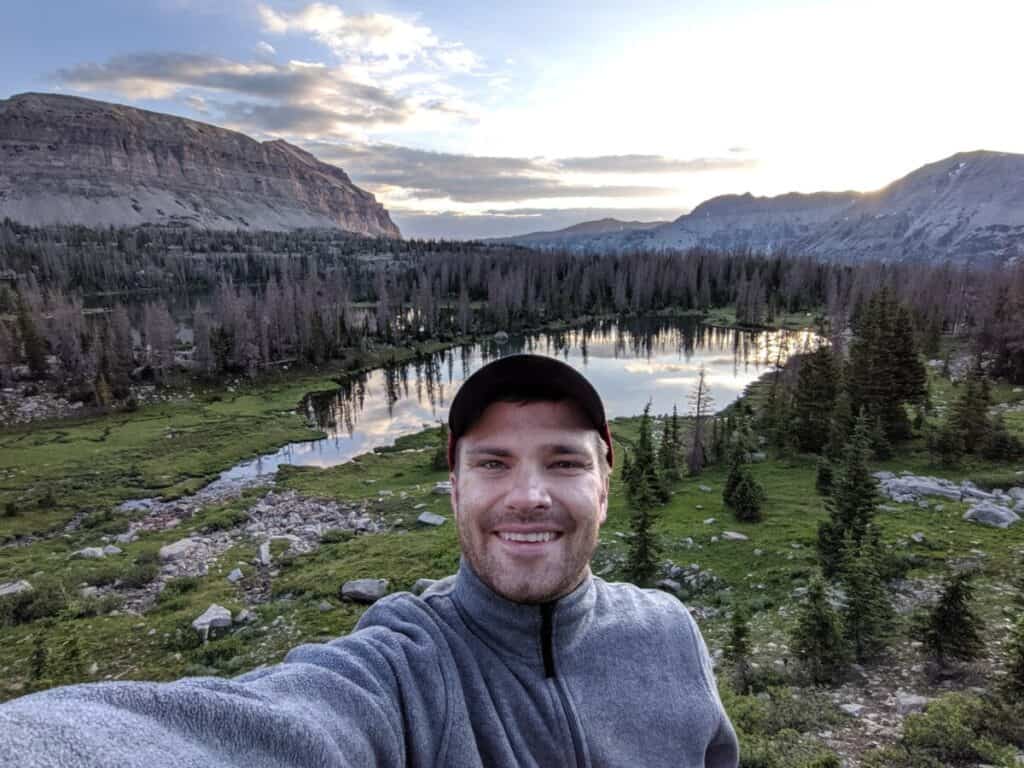
No matter the temperature, I always bring my ballcap when I’m hiking–it’s a simple and effective way to protect your skin from the sun on a hike.
Go Without A Plan For Bugs
At the very least, bugs on the hiking trail can be annoying. Biting flies, spiders, and mosquitos can be horrible. Even worse, certain areas may contain more dangerous species.
Many people are aware of the venomous spiders in their areas, but they may not know just how dangerous more common bugs can be. According to the BBC, mosquitos qualify as the deadliest creature on Earth. Although the danger may be mitigated in cooler areas, it’s still worth bringing along a bug spray or other tool to avoid being bitten as much as possible. Additionally, those who have allergies to bee stings should make sure to bring along an Epipen just in case.
Another example are ticks. Ticks are little blood suckers that fill up with blood and let go when they’ve had enough. Ticks can actually cause serious, life-altering diseases. If you want some other tips on how to avoid ticks, check out my post, here.
Bring Clothes For Only The Easiest Part Of The Hike
Each trail can bring a number of different challenges. Some parts of the trail might be simple and easy, making a light t-shirt and a pair of shorts ideal. Meanwhile, other areas might require climbing or movement through water. In other cases, it might just be that the weather changes. In either case, bringing some extra clothing on your hikes can be ideal.
While you likely won’t need too many extra clothing items, bringing a jacket, a pair of comfortable pants and extra shoes for climbing or walking through water can be very helpful. Some may also choose to bring extra pairs of socks. When you’re choosing clothes to bring along, make sure to consider the weather conditions, trail conditions, and how long you’ll be hiking.
A quick story on this one:
It was a hot August day, so I thought I didn’t need more than my shorts, t-shirt, and shoes for our hike up a mountain.
At the top of the mountain, the sun never melted the snow, completely, so there was a hard crust of icy snow left behind. Big deal, semi-warm day, hiking, a little snow?
My shins were bleeding and raw–the ice cut through my skin and it was really miserable. If I had thought about where we were going, I might have thought to have worn pants and my life would have been a lot better that day.
Avoid Taking Breaks
Hiking should be a time for fun, peace, and getting a little bit of exercise. It’s not something that should be an intense endurance test. When you’re feeling tired, take a break. Often, the trail itself will provide enough of a challenge that you don’t need to push yourself beyond your means.
In fact, being too tired can actually make hiking more dangerous. If you’re pushing too hard when you don’t need to, you might find that you don’t have the focus or strength when you do need it. Take your time to enjoy the planet, stop when you need to, and keep yourself refreshed and ready to take on whatever challenges the trail may hold.
Leave Snacks At Home
Even if you’re hiking for just a short while, you can’t go wrong with packing a few snacks. You might find that you need to be refreshed after your hike, or that you do end up needing to take a break to eat something. If you don’t bring snacks, you might find that you end up quite uncomfortable by the time you’re done hiking.
In more difficult cases, snacks can be the difference between life and death if you accidentally get lost. The more prepared you are for worst-case scenarios, the more likely it will be that you’re able to hang in there until help can arrive. You don’t need to bring a whole feast, but some granola bars or some jerky can make or break a hike.
Wear Clothes That Will Make You Suffer
Comfort is the name of the game when it comes to hiking. That means wearing clothes that won’t be too restricting while you’re on the trail. It can be tempting to head out in something like jean shorts and flip-flops, but even these can become a nuisance if the trail is anything more than a straight, flat walk through nature.
We all want to look good, but hiking is a time for focusing on having the best possible experience rather than being dressed in your best. Stick with comfortable, breathable clothing items, and make sure you have plenty of layers so that you can add or remove them as needed. Additionally, pick shoes that will keep your feet comfortable whether you’re on an easy walk or trudging a steep hill.
If you’re uncertain what kinds of clothing aren’t don’t work well for hiking, our article on the subject here can give you some tips on staying comfortable.
Touch Unfamiliar Plants
Hiking trails are home to a wide range of plant life. Some may be beautiful, and others might look quite tasty. However, it’s best to avoid eating or even touching any unfamiliar plants you might come across. Unless you’ve studied plants in-depth, it’s entirely possible you might discover that certain plants are less friendly than they may appear.
One of the best ways you can prepare yourself before going out onto the trail is to just become familiar with what unfriendly plants look like. That way, you’ll know what they are when you see them and can avoid coming into close contact with them.
To help you with becoming more familiar with some of the more common poisonous plants in the US, WebMD has created a convenient slideshow to show you what they look like and what might happen if you accidentally come into contact with them.
You might think that poison ivy is all there is to worry about!
In our backyard, we found noseburn (wikipedia). This stuff seems completely harmless but actually has stinging hairs that make my skin puff up and blister in less than a minute.

That’s just my backyard. 🙂
Forget To Let Someone Know Where You Are
Whether you’re going alone or not, make sure that someone off the trail knows where you’re going to be and for how long. It’s a simple measure to take that can ensure your rescue if you should accidentally end up injured or lost. If nothing goes wrong, then all you have to do is send your selected person a text at a pre-determined time to let them know you’re safe.
Even the most experienced hikers can sometimes experience problems on the trail. It may not even be the fault of the hiker, but due to something like trail conditions, wild animals, illness, or other people. No matter what the case may be, having someone looking out for you can help you to get help that much faster.
Neglect An Emergency Plan
Most of the time, hikers don’t have to worry too much about something bad happening to them on the trail. At most, some hikers might experience small sprains or scrapes. That said, it really only takes one terrible day for a hiker to wish they had a better plan.
To begin with, try to gain an understanding of what kinds of issues can pop up on the trail. The most common problems are minor injuries like a sprained ankle. Unless it’s a simple walk through a local park, it’s always a good idea to bringa way for contacting help, a first aid kit, and a few key items for helping you to survive if you do get lost, like tools to start a fire, snacks, and an emergency blanket.
Ignore The Weather
Even small changes in the weather can disrupt your trail experience. At the very least, it can be pretty annoying if you aren’t prepared for a weather change. Sudden rain or wind can leave you feeling chilled, uncomfortable, and can even cause changes in the trail that may contribute to injury. On the other hand, unexpected heat can result in heat exhaustion or even heat stroke.
To avoid these kinds of issues, just make sure you’re keeping track of what the weather will look like for your hiking trip. Weather predictions may change on a day-to-day basis, so keep your eye on the trends that may be occurring. Finally, make sure to check the weather forecast just before you leave for a final prediction. If you’re concerned about a possible weather change, it doesn’t hurt to bring a jacket or some lighter clothes to change into if needed.
Continue Even When You’re Miserable
Always listen to your gut. If you’re feeling miserable on the trail for any reason, don’t feel guilty about turning around. You can always hike on another day when you’re feeling better.
Human intuition is worth listening to when it comes to warning us of potential danger, even though we’re taught to ignore pain. No matter how silly you may feel about leaving the trail, it’s better to feel a little silly than to end up in danger. Hiking is meant to be enjoyed. If you are feeling too uncomfortable to enjoy the experience, it’s not an experience worth having.
Choose A Hike Beyond Your Experience Level
Just about every hiker out there is going to have a different combination of trail preference, experience, and hiking skills. Because of that, there are numerous trails out there that are designed to work perfectly for a wide range of skill sets. When you’re considering which trails you want to hike, taking a look at the difficulty rating for a specific trail can give you a good idea of what to expect while you’re on it.
If you’ve never encountered a difficulty rating for a given hiking trail, this page from the National Park Service can help you to understand what each rating means. Either not knowing the difficulty rating of a trail, or selecting a rating that is too far beyond your experience level, can put you at a much higher risk of injury. If you aren’t sure what rating suits you best, it’s ideal to start from the least difficult trails and carefully move up until you feel comfortable. When trying out any trails that might give you a challenge, it’s a wise choice to bring along a friend or two, just in case.
